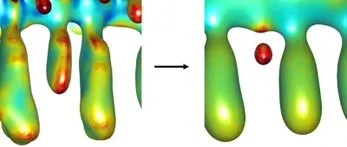Dendrite Fragmentation and Morphology During Melting and Solidification (DFM)
Science Objective
Nearly all metal alloys are produced by cooling a liquid metal until it hardens into a solid. Similar to the process seen in a snowstorm, in metal castings the solid grows by the formation of millions of snowflake-like crystals called dendrites. The shape of these dendrites affects the strength of metal alloys.
Status
This investigation is planned to launch aboard SpaceX-21 to the International Space Station (ISS) in December 2020.
Experiment Description
The Dendrite Fragmentation and Morphology During melting and Solidification (DFM) examines the effects of temperature changes and the starting dendrite shape on how dendrites coarsen and fragment in a controlled microgravity environment. Findings are expected to have a major impact on the understanding of, and ability to produce, metals with higher strength, both in space and on Earth.































